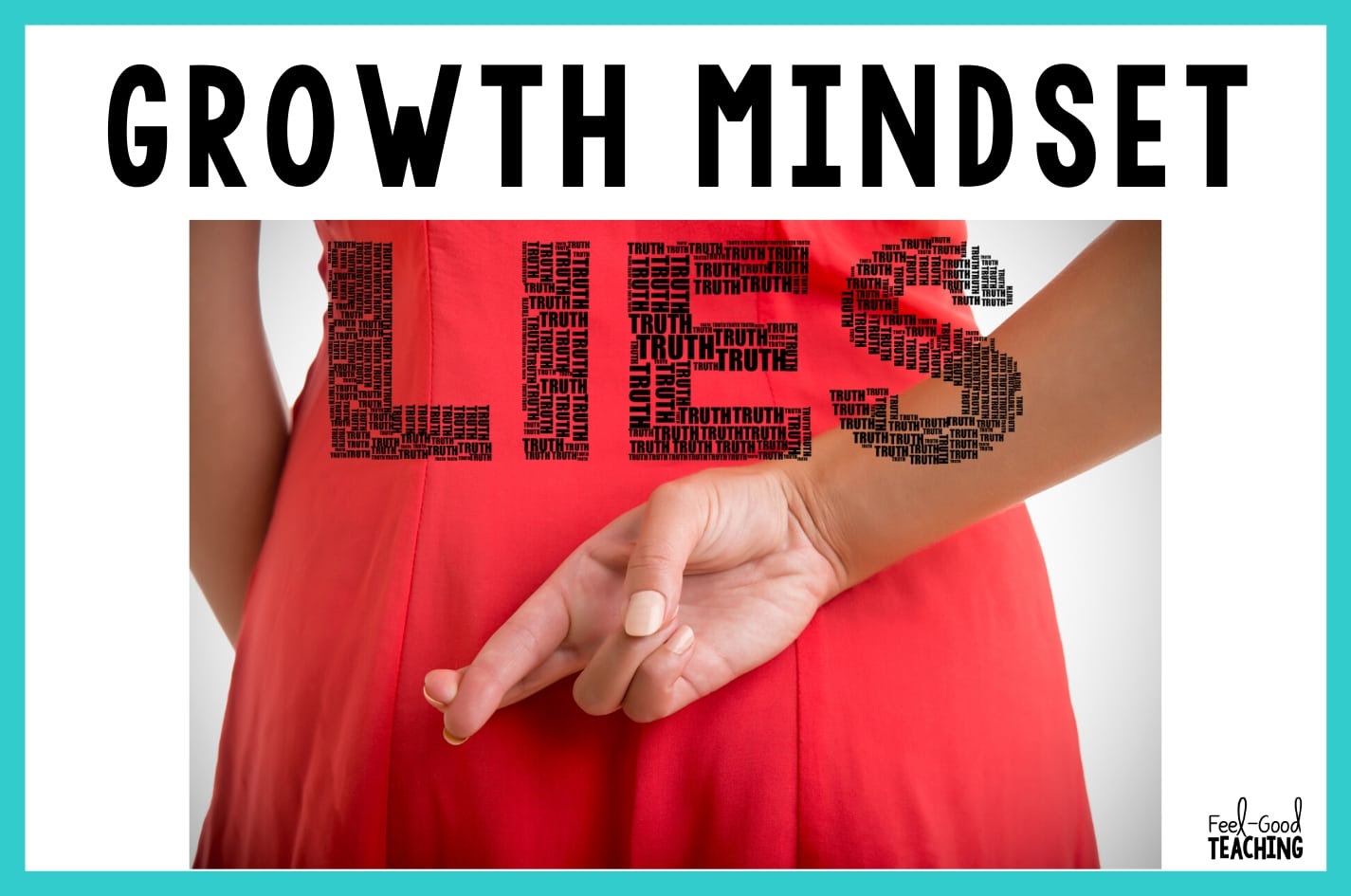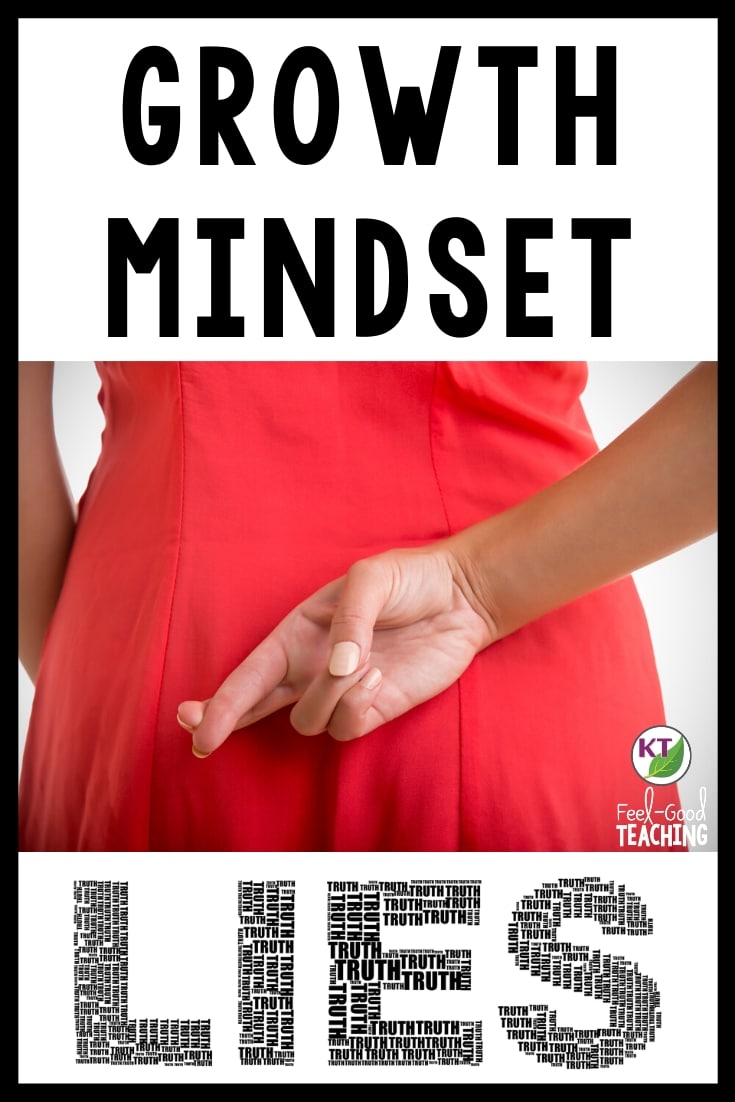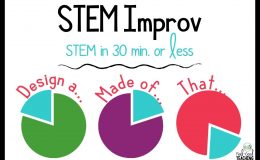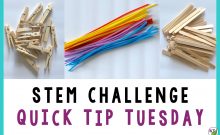OK, “lies” is a bit harsh. It implies intent, and I don’t think that’s the issue here, but I had to get your attention. This is important!
Growth Mindset is all the rage in education these days — and with good reason! As someone who grew up with a very fixed mindset, I know the struggle that comes along with feeling like I have to be good at something right away.
As much work as I’ve done as an adult to coax myself into having a growth mindset, I have to be honest — I still feel threatened when something doesn’t come easily.
Dancing, for example — I am just garbage at all types of dancing. I attend classes once a week because I am also an optimist, but I feel the sting of disappointment and embarrassment when I see myself in that giant wall mirror. It borders on humiliation some weeks and I bolt out of the room at the end of each class. The fight or flight is intense!
So years back when I stumbled upon a Design-Based Learning Master’s program that promised to help my students develop growth mindsets, I was all-in. I’m still all-in. As a result of this program, I could see how my students changed over time. The impact that approaching life with a true growth mindset can have is clear, and I want that for my students. I want to save them from the internal battles that I regularly fight with myself. And I want to try to re-wire my own brain too!
Recently, I’ve been doing a lot more educator trainings and volunteering in classrooms. As I’ve been in more classrooms, I’m seeing something I think we need to explore as educators: Are we misrepresenting “growth mindset” to our students?
When we tell students to have a growth mindset, are we backing that up, or is it just lip service? Are we really using “use your growth mindset” as exasperated code for “don’t complain about hard things & keep trying”?
Or, are we consciously setting up classroom cultures, lessons, and activities that nurture and teach what it means to have a growth mindset? Telling kids with fixed mindsets to use a growth mindset without teaching them how and giving them opportunities to demonstrate growth undermines the entire philosophy.
Another term I’ve been seeing pop up a lot recently is toxic positivity. I think the way some of us are using “growth mindset” falls into this category. If you want a quick idea of what makes positivity “toxic” check out this chart from an Instagram post.
Don’t get me wrong, it’s not a simple shift to make in classrooms from talking the talk of growth mindset to walking the walk. This is especially true if you have nursed a bit of a fixed mindset yourself.
It’s not something you can have the occasional classroom meeting or lesson about, it’s something that has to become ingrained in your classroom culture.
Since this is a STEM Challenge site, let’s use that as the example!
Here are some danger signs that growth mindset is coming across as lip service:
-
A challenge is done one time only; there is rarely a second iteration
-
Students are graded on the success of their designs
-
Students are praised primarily for successful designs
-
The teacher gets frustrated when the challenge “doesn’t work”
How might STEM Challenges look different in classrooms with a growth mindset culture?
1. Multiple Chances to Build
Students have at least two opportunities to build STEM Challenge designs on a regular basis. This doesn’t mean you can’t do any one-and-done challenges, it just shouldn’t be the norm. Students benefit more from 10 challenges done well than 20 done at a surface level, both in terms of growth mindset and the engineering design process.Asking students to “use their growth mindset” to create and build a design in just 20 minutes sends the message that growth mindset is a short-term thing. As a fixed mindset kid, I hear that as “Keep trying for 20 minutes. You should be able to figure it out in 20 minutes. If you don’t figure it out in 20 minutes, that’s the only chance you’ll get. Solve it in 20 minutes or you fail, and that failure is permanent because you will never get a second shot.”And that message is the opposite of what it means to have a growth mindset!(Teachers, are you thinking, “Yeah, that’s nice but I’ve only got so much time for this…”? Stay tuned!)
2. Assess Thoughtfully
All right, how should you handle assessment? I always recommend that students never be graded on the success of their designs. I believe it undermines my actual goals of STEM Challenges. When the focus is on product over process, I send the message that I expect success on the first or second try. Most of science simply doesn’t work this way (most of life doesn’t either)! Instead, I use rubrics to encourage the behaviors of the process I want to reinforce. Sometimes that means I focus on the 4 C’s of Engineering. Other times it’s the STEM Challenge Cycle / Engineering Design Process, STEM Ideals, or some hybrid. I also have students discuss, record & reflect on every challenge. You can find more details about my assessment choices that emphasize process over product here.
3. Praise Thoughtfully
Finally, watch what you praise as students build and present their designs closely. It’s not inappropriate to praise successful designs for being successful. I think it’s absolutely natural to do so! We just need to be sure that’s not the only thing we compliment or point out. Look for where you see groups have taken a risk that didn’t pan out. That’s behavior I want to encourage! Risk-taking is important for innovation, and I want to keep that trait alive and well in my students. When I primarily focus on successful designs, I teach students to be risk-averse and to travel the path that is most likely to result in a successful design as opposed to exploring a more interesting, but more risky path. I don’t want cookie-cutter designsI also try to point out any interesting ideas that didn’t work, especially if they seem promising. Just because an idea wasn’t executed well in the first build, doesn’t mean it can’t be successful in the second.We discuss things that seem like they should have worked and analyze why it might not have. I get excited about the questions students ask and thoughts they express that show their analysis. I also recommend praising any and all of the 4 C’s of Engineering.
4. Fix Your Face 🤣
Have you ever gotten visibly upset or annoyed when a STEM Challenge “doesn’t work” in your class? I’m talking about when your students aren’t able to come up with successful designs. There’s no judgment here! I’m embarrassed to admit that I have let myself be a mirror to student frustration rather than a model or growth mindset. Think about the message that sends. It says, “You should expect to be successful in your endeavors on the first try. When you are not, you should be angry/upset/annoyed.”
I’m not saying you shouldn’t have human emotions when you fail! But if you want to set a growth mindset example for your students, you need to have a plan for how to handle a “fail” as a model of growth mindset.
You can say all the pretty words you like about growth mindset, but your actions speak so much louder!
Yeah, but …
OK, I know this post doesn’t solve all.the.problems! I’m certain many teachers will be reading this and thinking, “Yeah, but this won’t work for me because _____________ (time, standards, materials, students, etc.).”
I know this post is just the beginning of the conversation.
Let’s talk about your “Yeah, buts…”! Share your thoughts and questions in the comments. I’ll be sure to answer and maybe even turn your “Yeah, but…” into its own blog post.
Pin Me









